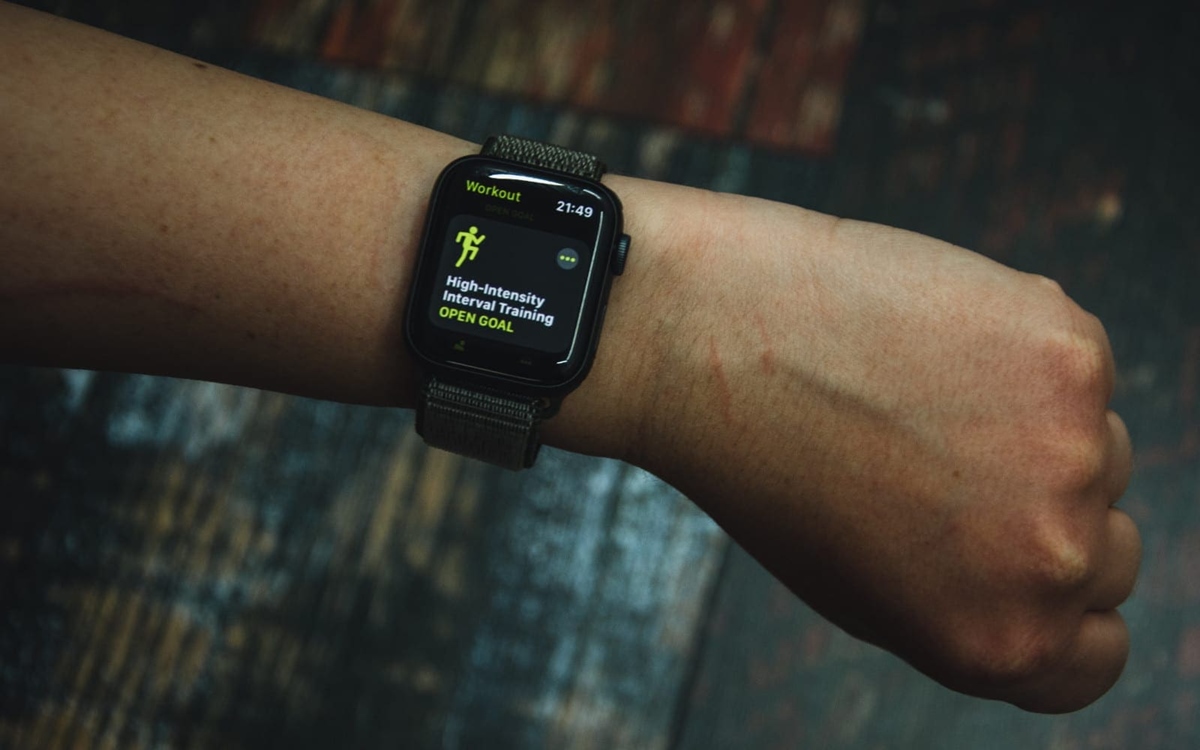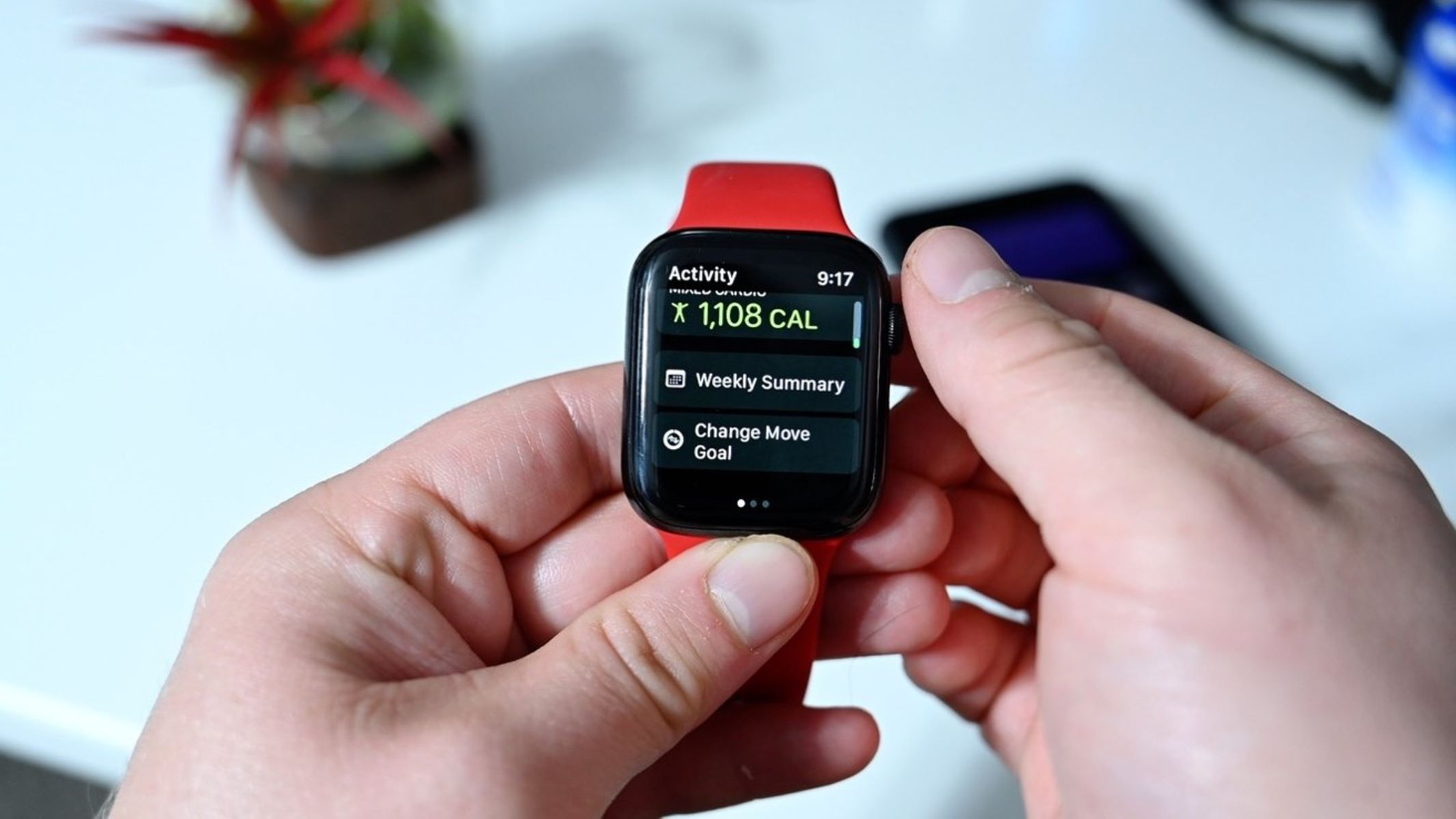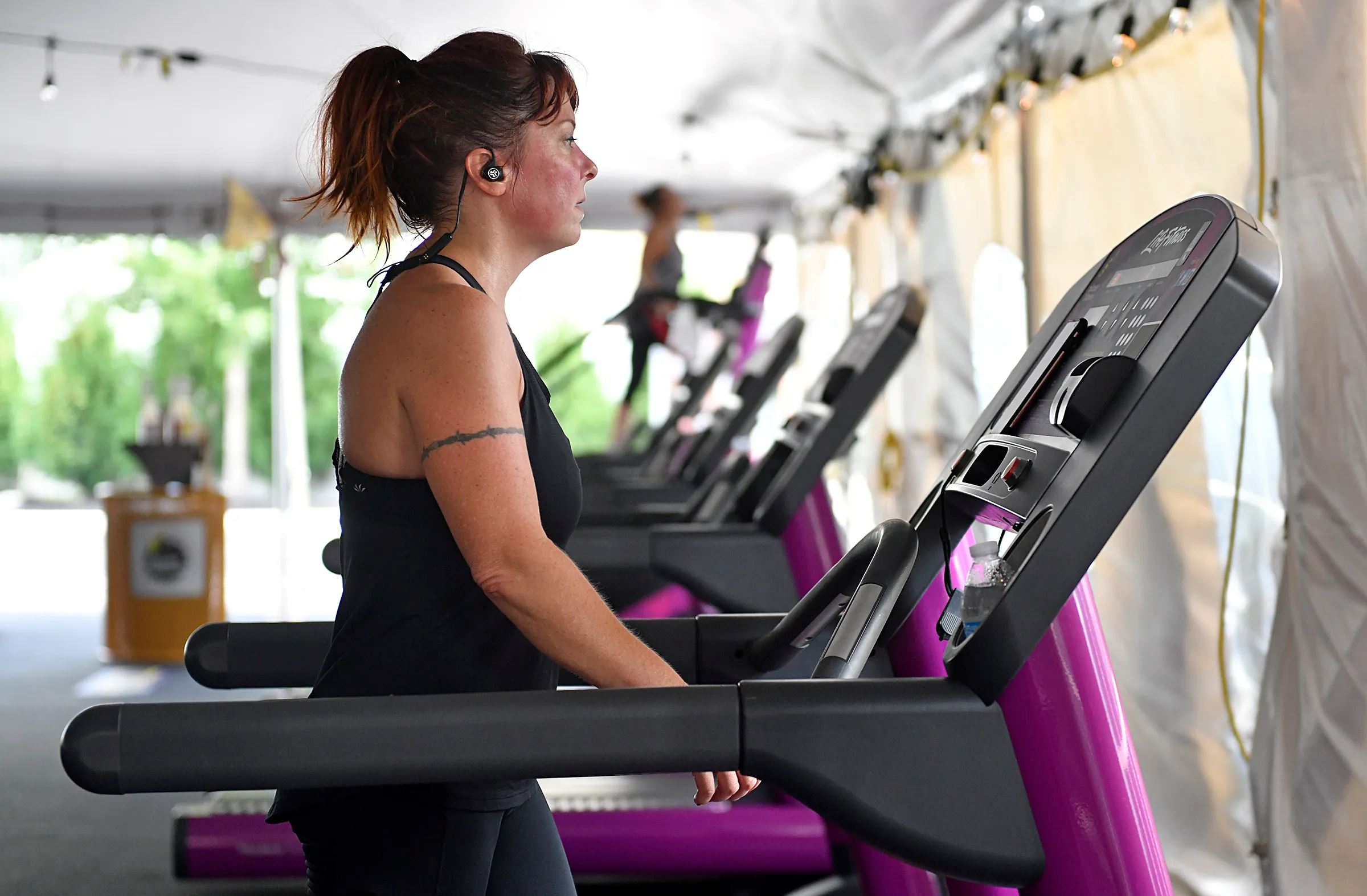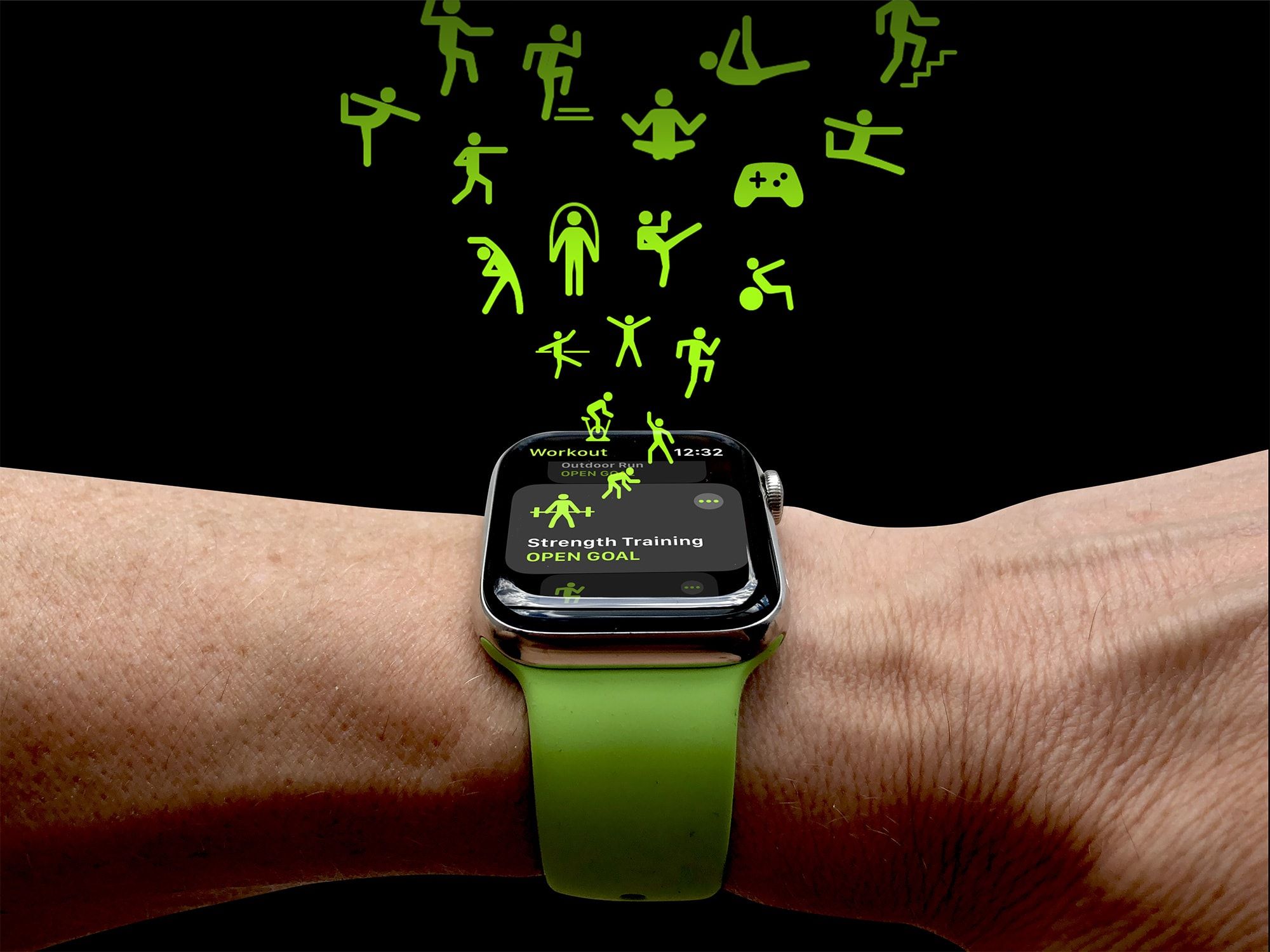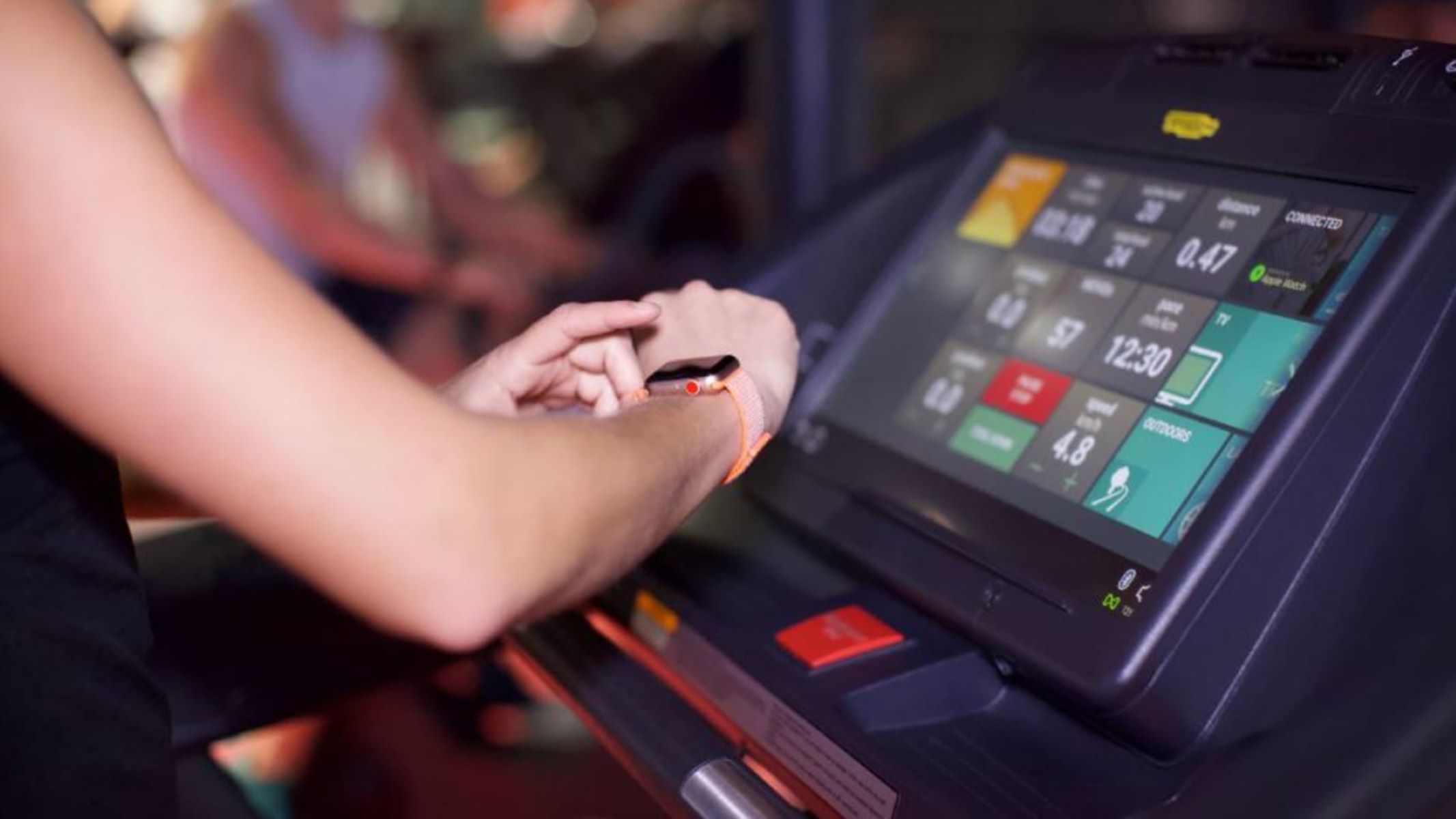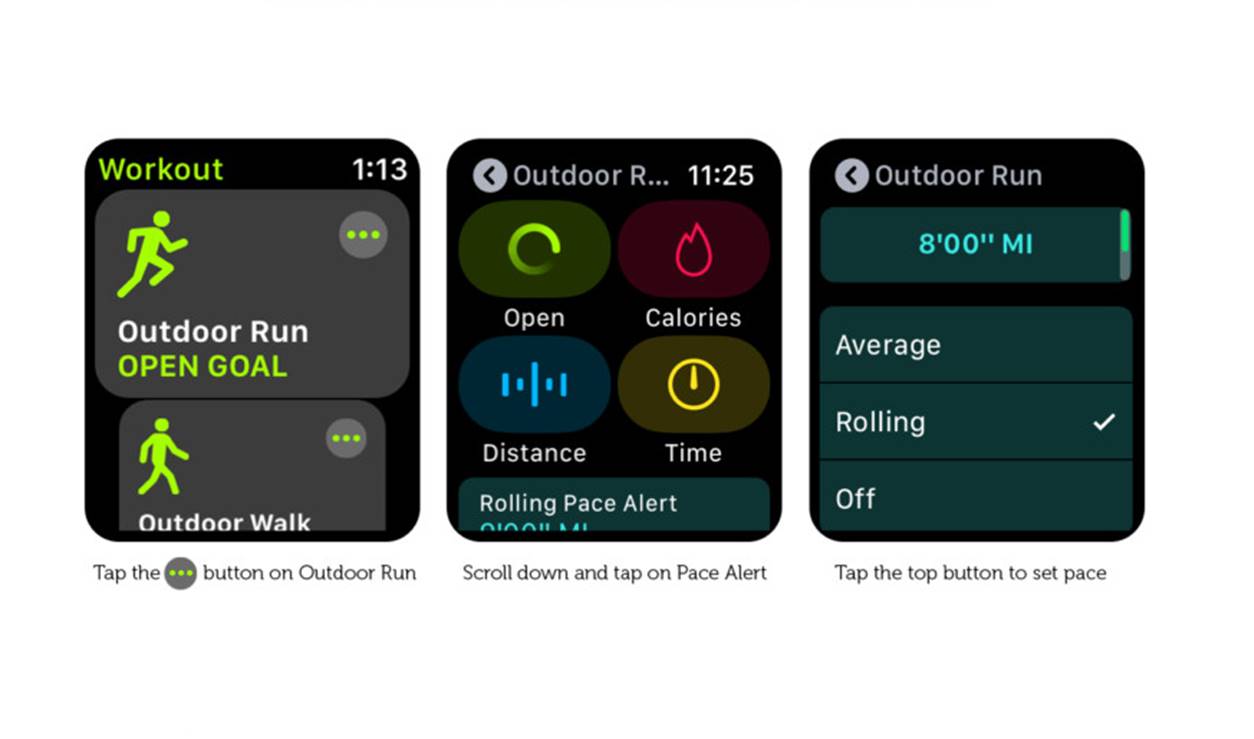

Brands
What Is Average Pace On Apple Watch
Published: October 4, 2023
Learn about the average pace on Apple Watch and how different brands compare in tracking your fitness goals. Discover the best brands for accurate pace monitoring.
Introduction
Welcome to the world of fitness tracking with the Apple Watch! If you’re an avid runner or someone who loves to monitor your workouts, you may already be familiar with the term “pace.” Pace refers to the speed at which you are running or covering a certain distance. It is an essential metric for runners who are looking to improve their performance and track their progress over time.
With the Apple Watch, you have the ability to accurately measure your pace and even calculate your average pace during your runs. This feature can provide you with valuable insights into your fitness level and help you set realistic goals for your training.
In this article, we will dive deeper into what pace means, how the Apple Watch calculates average pace, and the benefits of tracking it during your workouts. Whether you’re a seasoned runner or just starting your fitness journey, understanding average pace on your Apple Watch can take your training to the next level.
So, whether you’re training for a marathon, trying to beat your personal record, or simply aiming to maintain a steady pace, let’s explore how the Apple Watch can help you achieve your goals and keep you motivated along the way.
Understanding Pace
Before we delve into how the Apple Watch calculates average pace, let’s first understand the concept of pace itself. Pace is a measure of how quickly you are covering a certain distance, typically expressed as time per unit distance. It can be represented in minutes per mile or kilometers.
Pace is a crucial metric for runners as it helps gauge their effort and performance during a run. It allows you to understand how fast or slow you are moving, enabling you to pace yourself effectively and maintain a consistent level of exertion throughout your workout.
When talking about pace, it is important to differentiate it from speed. While speed measures how fast you are moving in terms of distance covered per unit of time, pace focuses on the time it takes to cover a specific distance. For example, if you run a mile in 8 minutes, your pace would be 8 minutes per mile.
Understanding pace is essential for setting realistic goals, tracking progress, and improving your running performance. By monitoring your pace, you can identify your strengths and weaknesses, make adjustments to your training routine, and push yourself to achieve new milestones.
Whether you’re a beginner looking to complete your first 5K or an experienced marathon runner aiming for a personal best, understanding and optimizing your pace is key to achieving your goals.
Now that we have a clear understanding of pace, let’s explore how the Apple Watch calculates average pace during your runs.
How Apple Watch Calculates Average Pace
One of the impressive features of the Apple Watch is its ability to accurately calculate your average pace during your workouts. The device utilizes a combination of GPS data, accelerometer readings, and heart rate monitoring to provide you with precise and real-time information about your pace.
When you start a run or a workout on your Apple Watch, it automatically begins tracking your distance, time, and other relevant metrics. As you move, the watch captures your location using GPS technology to measure the distance covered. Simultaneously, the built-in accelerometer monitors your movement to detect changes in speed and pace.
Additionally, the Apple Watch takes into account your heart rate during your exercise session. By monitoring your heart rate, it can determine the level of effort you’re exerting and factor that information into calculating your pace. This allows for a more accurate picture of your overall performance.
With this data combined, the Apple Watch calculates your current pace in real-time and continuously updates you on your progress. It takes into account every step, stride, and change in speed to provide you with the most accurate and up-to-date information about your pace.
When it comes to average pace, the Apple Watch considers the total distance covered throughout your workout and the total time taken. It divides the total distance by the total time to give you the average pace for the entire duration of your activity. This average pace metric helps you understand the overall speed at which you were running or moving during your workout.
By having access to real-time pace and average pace metrics, you can make on-the-go adjustments to your running pace and optimize your performance. Whether you want to speed up or slow down, the Apple Watch provides you with the information needed to achieve your desired pace.
Now that we’ve explored how the Apple Watch calculates average pace, let’s discuss the benefits of tracking this metric during your workouts.
Benefits of Tracking Average Pace on Apple Watch
Tracking your average pace with the help of the Apple Watch can offer a range of benefits for your fitness and training. Here are some of the advantages of monitoring and utilizing this important metric:
- Monitor Progress: By tracking your average pace over time, you can assess your progress and improvements. As you continue to train, you can expect your average pace to gradually improve, indicating enhanced speed and endurance.
- Set Realistic Goals: Knowing your average pace allows you to set achievable goals for your future runs or races. You can determine a target pace based on your current abilities and work towards maintaining that pace or gradually improving it.
- Pace Yourself: Monitoring your average pace helps you pace yourself effectively during your workouts. Whether you’re aiming for a long-distance run or attempting intervals, understanding your average pace prevents you from going too fast too soon, which can lead to burnout or fatigue.
- Optimize Training: Tracking your average pace allows you to evaluate the effectiveness of your training program. You can analyze how different factors such as distance, terrain, or intervals affect your pace, helping you fine-tune your workouts for better results.
- Race Strategy: When preparing for a race, knowing your average pace helps you strategize your race plan. You can set a target pace that aligns with your race goal and maintain it throughout the event, ensuring a balanced and efficient performance.
- Stay Motivated: Seeing your average pace improve over time can be incredibly motivating. It shows that your hard work and dedication are paying off, encouraging you to continue pushing yourself and striving for even better results.
By leveraging the average pace feature on your Apple Watch, you can gain valuable insights into your running performance, tailor your training, and enhance your overall fitness journey.
Now that we understand the benefits of tracking average pace, let’s explore some tips on how to improve your average pace with the help of your Apple Watch.
Tips for Improving Average Pace with Apple Watch
Your Apple Watch can be a powerful tool to help you improve your average pace and enhance your running performance. Here are some tips to make the most out of your Apple Watch and work towards achieving faster average paces:
- Use Interval Training: Interval training involves alternating between periods of high-intensity effort and recovery. Incorporate interval workouts into your routine, using your Apple Watch to monitor your pace during the intense portions. This helps improve speed and overall cardiovascular fitness.
- Set Pace Alerts: Take advantage of the Apple Watch’s pace alerts feature. Set a target pace before your run, and the watch will provide haptic feedback or a sound alert if you fall below or exceed your desired pace. This helps you maintain a consistent and goal-oriented pace.
- Utilize Audio Feedback: Enable audio feedback on your Apple Watch to receive spoken updates on your pace, distance, and other metrics during your run. This allows you to stay informed about your progress without having to constantly check your watch, helping you maintain focus and adjust your pace accordingly.
- Use GPS for Route Planning: Plan your running routes using the GPS feature on your Apple Watch. This enables you to run predefined distances and monitor your pace accurately. You can also explore new routes to keep your runs interesting and challenging.
- Track Heart Rate and Recovery: Pay attention to your heart rate data on the Apple Watch, especially during recovery periods. A lower heart rate during rest indicates improved cardiovascular fitness. By monitoring these metrics, you can assess your readiness for intense efforts and ensure optimal recovery between runs.
- Progress Gradually: Aim for gradual progress rather than trying to dramatically improve your average pace overnight. Push yourself to run a bit faster during specific segments of your runs, gradually increasing the overall pace. This helps prevent injury and allows your body to adapt to increased speed and intensity.
- Stay Consistent: Consistency is key when it comes to improving your average pace. Regularly schedule your running sessions and stick to your training plan. The more consistent you are, the more progress you will see over time.
Remember, improving your average pace takes time and dedication. Pairing your training efforts with the powerful features of your Apple Watch can provide the insights and motivation you need to reach new running milestones.
Now that we’ve explored tips for improving average pace, let’s wrap up with a concluding section.
Conclusion
The Apple Watch is not just a device for tracking time or receiving notifications; it’s a powerful tool for fitness enthusiasts, particularly for runners. By understanding and utilizing the average pace feature on your Apple Watch, you can take your running performance to the next level.
We explored the concept of pace and how the Apple Watch calculates average pace during your workouts. We also discussed the benefits of tracking average pace, including monitoring progress, setting realistic goals, optimizing training, and staying motivated.
Additionally, we provided tips for improving your average pace with the help of your Apple Watch. From using interval training and setting pace alerts to utilizing GPS for route planning and tracking heart rate, these tips can help you enhance your running performance and achieve new milestones.
Remember, improving your average pace is a gradual process that requires consistency, patience, and dedication. The Apple Watch will be your reliable companion in tracking and monitoring your progress, providing valuable insights to help you reach your running goals.
So, lace up your running shoes, strap on your Apple Watch, and let it guide you towards faster average paces. Whether you’re a seasoned runner or just starting your fitness journey, the power is in your hands – or rather, on your wrist – to push yourself, track your progress, and become the best runner you can be.
